View of Mount Vernon
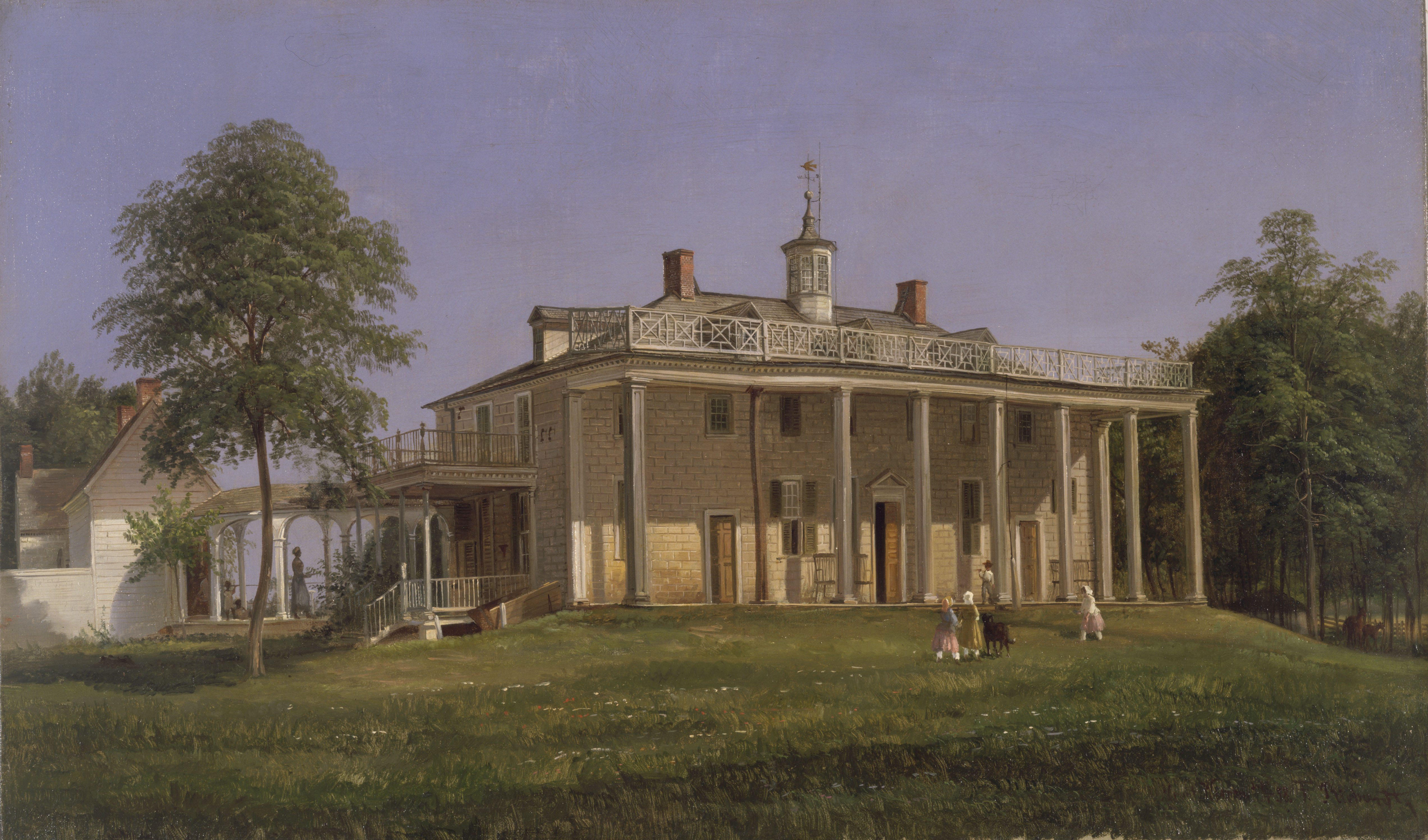
How do the stories left out of the history books change how you understand the past?

How do the stories left out of the history books change how you understand the past?

How do the stories left out of the history books change how you understand the past?
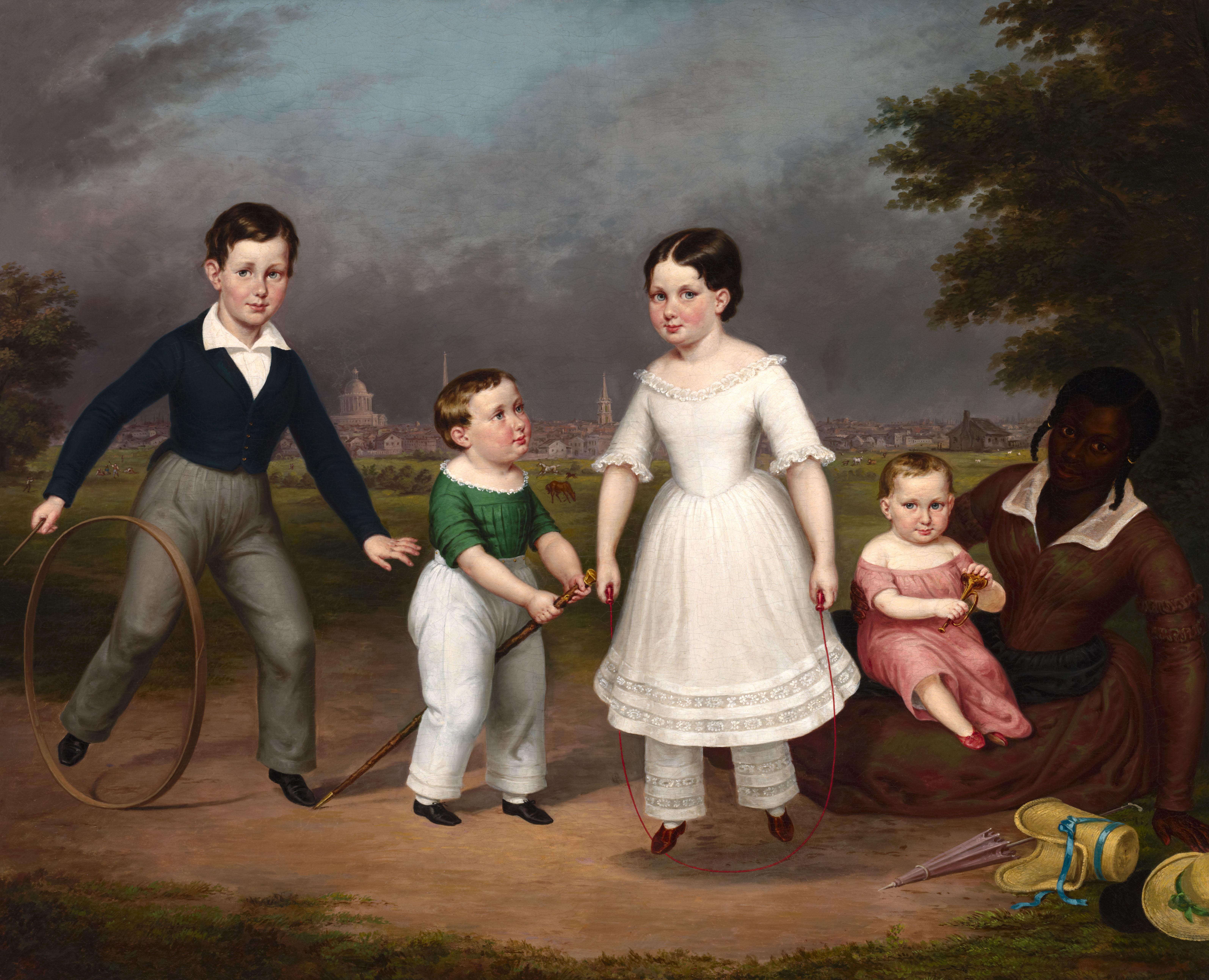
How does the legacy of slavery affect life today?
This painting depicts the children of Reverend William Anderson Scott, a Presbyterian minister in New Orleans from 1842 to 1854. The spire of his First Presbyterian Church is visible at the center of the city’s skyline. Scott family papers suggest that the African American woman at the right is Mila, who was enslaved by the family. Her inferior position relative to the children is emphasized by her posture and placement within the composition.

How does the legacy of slavery affect life today?
This painting depicts the children of Reverend William Anderson Scott, a Presbyterian minister in New Orleans from 1842 to 1854. The spire of his First Presbyterian Church is visible at the center of the city’s skyline. Scott family papers suggest that the African American woman at the right is Mila, who was enslaved by the family. Her inferior position relative to the children is emphasized by her posture and placement within the composition.
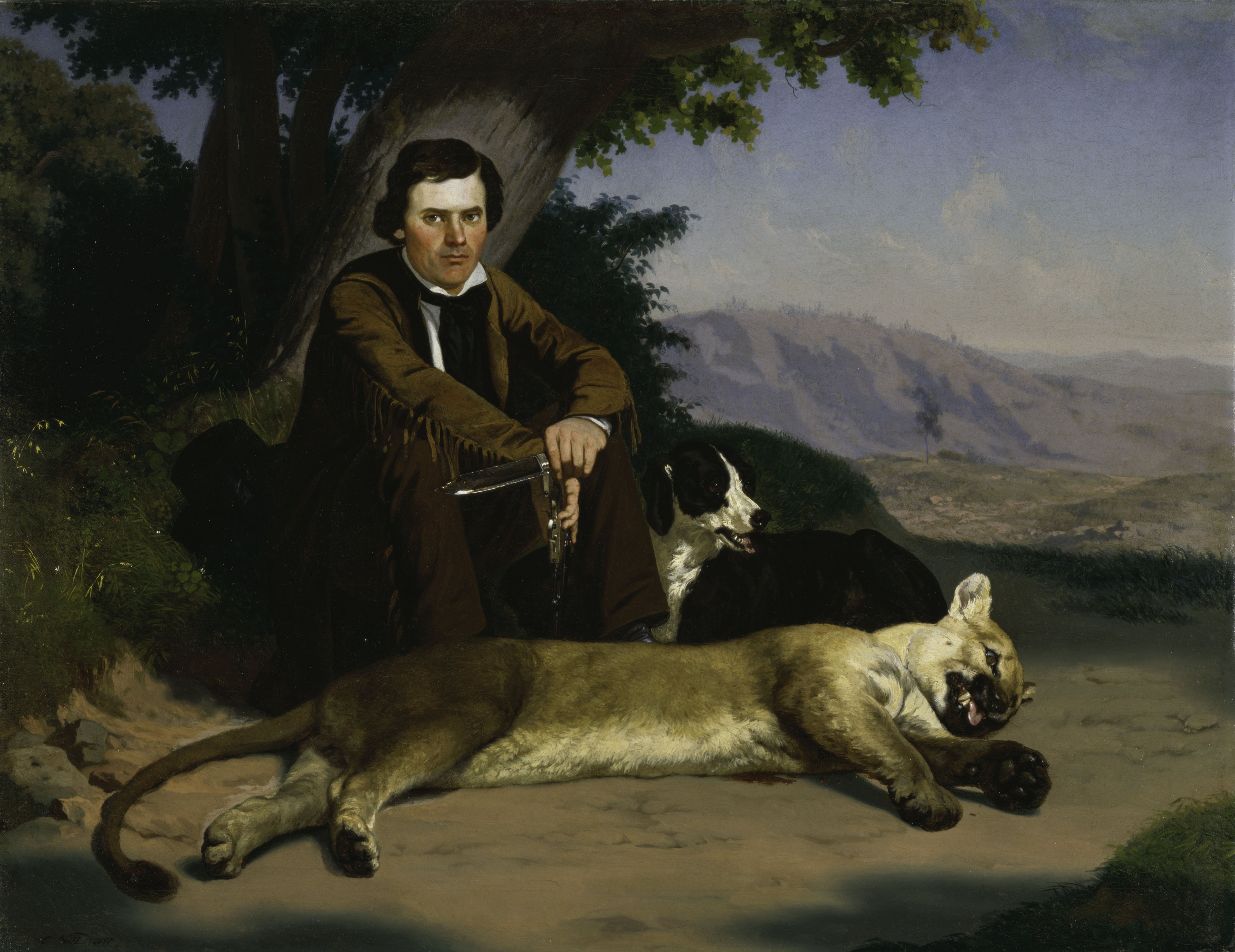
Is this man rugged or refined?
Peter Quivey was a California pioneer who fought in the Mexican-American War before settling in San Jose. This portrait presents the subject as mediating between the frontier and civilization through contrasting details such as the primitive knife and the sophisticated revolver, and the wild mountain lion and the trained hunting dog. Quivey’s two identities—as a frontiersman and as an art patron—reveal the competing social and cultural agendas that coexisted in Gold Rush California.

Is this man rugged or refined?
Peter Quivey was a California pioneer who fought in the Mexican-American War before settling in San Jose. This portrait presents the subject as mediating between the frontier and civilization through contrasting details such as the primitive knife and the sophisticated revolver, and the wild mountain lion and the trained hunting dog. Quivey’s two identities—as a frontiersman and as an art patron—reveal the competing social and cultural agendas that coexisted in Gold Rush California.
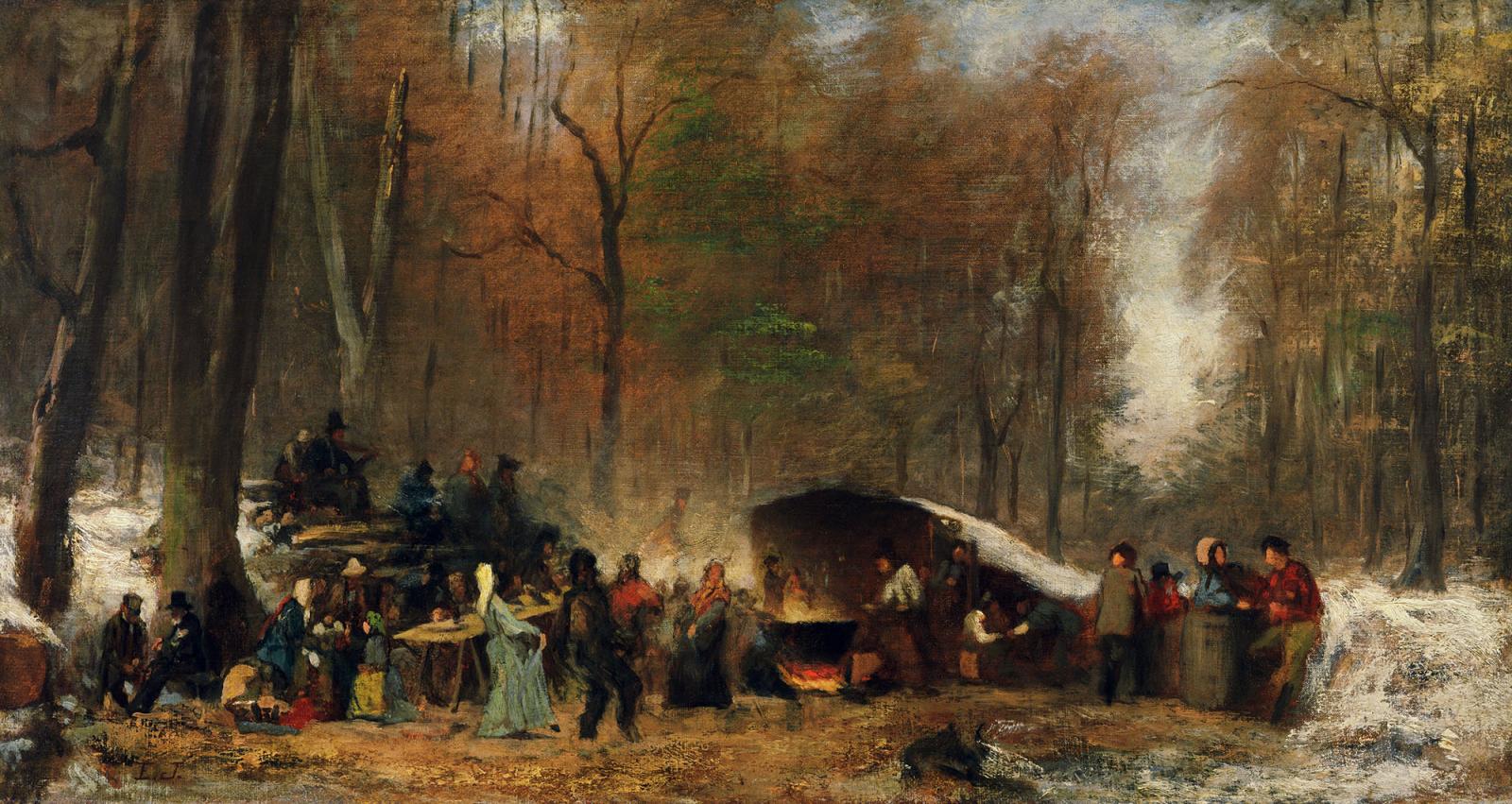
Is tradition important to you?
This painting depicts “boiling day,” when the season’s first harvest of maple tree sap was heated to produce syrup or sugar. Community members have gathered near the hot iron cauldron to talk, play music, dance, and eat. This image would have offered urban viewers a respite from imagery of the Civil War, though one Vermonter noted that maple sugar “is a product of our state, and it is never tinctured with the sweat, and the groans, and the tears, and the blood of the poor slave.”

Is tradition important to you?
This painting depicts “boiling day,” when the season’s first harvest of maple tree sap was heated to produce syrup or sugar. Community members have gathered near the hot iron cauldron to talk, play music, dance, and eat. This image would have offered urban viewers a respite from imagery of the Civil War, though one Vermonter noted that maple sugar “is a product of our state, and it is never tinctured with the sweat, and the groans, and the tears, and the blood of the poor slave.”
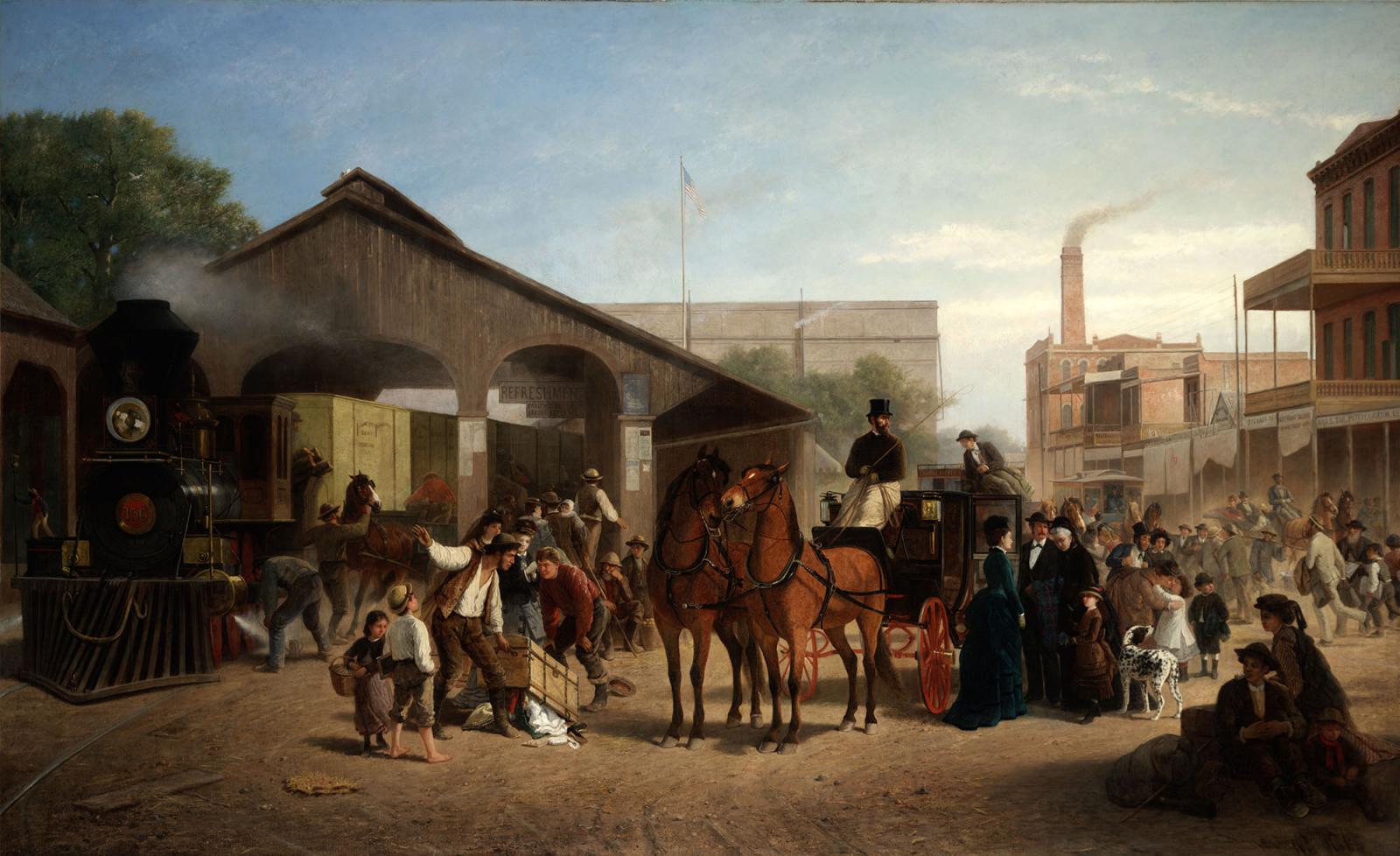
Is anything about this scene similar to travel today?
This depiction of the Central Pacific Railroad’s western terminus in Sacramento emphasizes the mingling of people from different cultural and economic backgrounds. In the foreground, a carriage meets its finely dressed passengers, while at the far right a Chinese laborer carries a heavy load. Sacramento’s status as a growing frontier town is suggested by the presence of a hardware store advertising building supplies.

Is anything about this scene similar to travel today?
This depiction of the Central Pacific Railroad’s western terminus in Sacramento emphasizes the mingling of people from different cultural and economic backgrounds. In the foreground, a carriage meets its finely dressed passengers, while at the far right a Chinese laborer carries a heavy load. Sacramento’s status as a growing frontier town is suggested by the presence of a hardware store advertising building supplies.